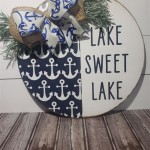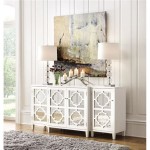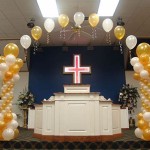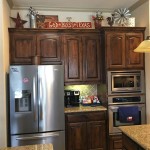A Deep Dive into 1970s Home Decor Trends
The 1970s represent a distinct and iconic era in home decor, characterized by a departure from the minimalist aesthetics of previous decades. This period embraced vibrant colors, bold patterns, and a newfound emphasis on natural elements, resulting in interiors that were both comfortable and expressive. Understanding the key trends of this decade provides insight into a significant period in design history and can inform contemporary design choices seeking a touch of retro flair.
The trends of the 1970s reflected a broader cultural shift towards individuality, freedom, and a connection with nature. This manifested in interior design through the use of earthy tones, natural materials, and designs that promoted relaxation and social interaction. The decade also saw the rise of mass production, making stylish furniture and accessories more accessible to a wider audience, further contributing to the widespread adoption of these decorative styles.
The Dominance of Earth Tones and Bold Colors
One of the defining characteristics of 1970s interior design was the prevalence of earth tones. Colors such as avocado green, burnt orange, mustard yellow, and brown reigned supreme, dominating walls, furniture, and accessories. These warm and inviting hues created cozy and comforting environments, reflecting a desire for grounding and stability amidst the changing social landscape.
Beyond earth tones, the 1970s also experimented with bolder and brighter colors. The use of vibrant hues like hot pink, electric blue, and sunshine yellow added a touch of energy and playfulness to interiors. These colors were often used as accent colors, creating striking contrasts against the more muted earth tones. Geometric patterns and psychedelic designs often incorporated these bold colors, adding a sense of visual excitement and dynamism to the overall aesthetic.
The combination of earthy and bold colors created a unique visual language that defined the 1970s interior. Walls were often painted in earthy tones, while furniture and accessories featured both earthy and bold colors. This created a balanced and harmonious effect, preventing the interiors from becoming either too bland or too overwhelming. The skillful use of color was a key element in achieving the signature 1970s look.
The popularity of these colors extended beyond paint choices. Appliances, kitchenware, and even bathroom fixtures were available in these distinctive shades. This commitment to color consistency throughout the home solidified the 1970s aesthetic and created a cohesive design narrative.
The Rise of Natural Materials and Textures
The 1970s saw a significant increase in the use of natural materials in home decor. This trend reflected a growing awareness of environmental concerns and a desire to connect with the natural world. Materials such as wood, rattan, cork, and macrame were widely incorporated into furniture, accessories, and architectural details.
Wood paneling, often in dark or medium stains, was a common feature in 1970s homes. This could be found on walls, ceilings, and even furniture, creating a warm and rustic atmosphere. Rattan and wicker were used for chairs, tables, and decorative items, adding a touch of bohemian flair. Cork was also popular as a wall covering or flooring option, providing a natural and textured surface.
Macrame, a technique of knotting cords or strings to create decorative patterns, became a popular craft and design element. Macrame plant hangers, wall hangings, and even curtains were common additions to 1970s homes, adding a handcrafted and bohemian touch to the interiors. The use of these natural materials and textures contributed to the overall sense of warmth, comfort, and connection with nature that characterized the decade's design aesthetic.
Plants played an integral role in bringing the outdoors in. Large potted plants, hanging baskets, and terrariums added a touch of greenery and life to interior spaces. Popular choices included ferns, spider plants, and macrame-supported hanging plants, further enhancing the natural and organic feel of the 1970s home.
Furniture Styles: From Modular to Comfortable
Furniture design in the 1970s was characterized by comfortable and functional pieces, often featuring modular designs and soft, rounded edges. The emphasis was on creating spaces that were conducive to relaxation and social interaction. Sectional sofas, beanbag chairs, and oversized cushions were popular choices, contributing to the laid-back and inviting atmosphere of the decade.
Modular furniture allowed for flexible arrangements and customization, catering to the evolving needs of the homeowner. Sectional sofas could be configured in various ways, adapting to different room sizes and layouts. Beanbag chairs provided a casual and comfortable seating option, perfect for lounging and socializing. These furniture styles reflected a shift towards informality and a rejection of the more rigid and formal designs of previous decades.
Upholstery fabrics ranged from plush velvets and corduroys to durable synthetic materials. Patterns were often bold and geometric, complementing the overall color palette of the 1970s interior. Floral prints and psychedelic designs also made appearances, adding a touch of whimsy and personality to the furniture. The focus was on creating comfortable and visually appealing pieces that enhanced the overall aesthetic of the space.
Another prevalent furniture trend involved low-slung designs. Coffee tables, side tables, and even beds were often positioned lower to the ground, contributing to a relaxed and grounded atmosphere. This design choice further emphasized the connection with nature and the desire for a more informal and comfortable living environment.
Textiles and Patterns: A Kaleidoscope of Designs
Textiles and patterns played a crucial role in defining the aesthetic of 1970s home decor. Bold geometric patterns, psychedelic designs, and floral prints were widely used on fabrics, wallpapers, and rugs, adding a sense of visual interest and dynamism to the interiors. These patterns often incorporated the characteristic color palette of the decade, featuring earthy tones, bright hues, and contrasting combinations.
Geometric patterns, such as stripes, chevrons, and squares, were popular choices for wallpapers and rugs. These patterns added a sense of structure and order to the space, while also providing a visual contrast to the more organic shapes and textures found in furniture and accessories. Psychedelic designs, inspired by the counterculture movement, featured swirling patterns and vibrant colors, creating a sense of energy and excitement.
Floral prints, often featuring oversized blooms and bold color combinations, brought a touch of nature into the interiors. These prints were used on fabrics for curtains, upholstery, and bedding, adding a soft and romantic touch to the overall aesthetic. The combination of these various patterns and textures created a rich and visually stimulating environment that reflected the eclectic and individualistic spirit of the 1970s.
Shag carpets were an iconic flooring choice, adding a sense of luxury and comfort underfoot. These carpets were available in a range of colors, from earthy browns and greens to vibrant oranges and yellows, complementing the overall color scheme of the room. The deep pile of shag carpets provided a soft and plush surface, enhancing the cozy and inviting atmosphere of the 1970s home.
Lighting Fixtures: Functionality and Design
Lighting fixtures in the 1970s were as much about design as they were about functionality. Lava lamps, mushroom lamps, and track lighting were popular choices, adding a distinctive touch to the interiors. These lighting fixtures not only provided illumination but also served as decorative elements, contributing to the overall aesthetic of the space.
Lava lamps, with their mesmerizing displays of molten wax, were a quintessential symbol of the 1970s. These lamps added a touch of psychedelic flair to any room, creating a relaxing and hypnotic atmosphere. Mushroom lamps, with their rounded shapes and soft glow, provided a warm and inviting light, perfect for creating a cozy ambiance.
Track lighting, with its adjustable spotlights, offered a versatile and practical lighting solution. This type of lighting allowed homeowners to direct light where it was needed most, highlighting specific areas or objects within the room. The use of these various lighting fixtures contributed to the overall sense of style and sophistication that characterized 1970s interior design.
Stained glass lamps and pendants also gained popularity, adding color and texture to the illumination. These fixtures often featured geometric patterns or floral motifs, complementing the other decorative elements within the room and creating a warm and inviting glow.
Overall, the 1970s home decor trends emphasized comfort, individuality, and a connection with nature. The use of earthy tones, bold colors, natural materials, and comfortable furniture created inviting and expressive spaces that reflected the cultural shifts and artistic sensibilities of the era. While some aspects of the 1970s aesthetic may seem dated today, many of the underlying principles, such as comfort, functionality, and a connection with nature, remain relevant and inspiring for contemporary design.

Home Decor Trends Of 2025 Learn What Is Stylish This Year Fabrics And

Top Design Trends For 2025 Vintage Decor

The Future Of Interior Design Is Soft And Squiggly Vogue

Interior Design Trends 2025 Zds Architecture Interiors

20 Top Interior Design Trends 2025 From Home Decor Experts

7 Hottest Home Decor Trends 2025 Show To

2025 Home Decor Trends 10 Ideas To Try This Year

20 Top Interior Design Trends 2025 From Home Decor Experts

7 Hottest Home Decor Trends 2025 Show To

Why Curved Furniture Is The Trend To Watch Out For In 2025







